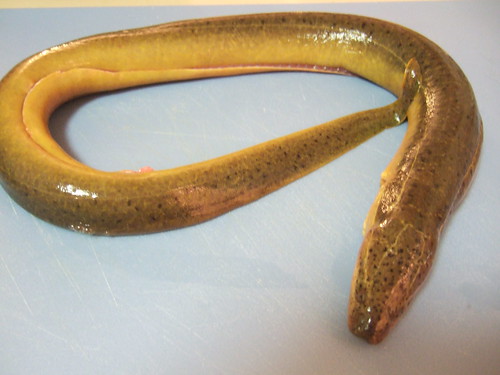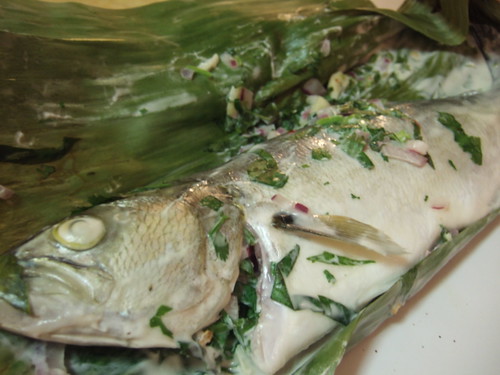I remember the day like it was yesterday. I was waiting for my coffee inside Starbucks on Crosby and I noticed this man next to me. He looked very familiar. I didn’t realize I was staring at him. I looked away and left with my coffee. I knew he was a chef, but my mind was drawing a blank. A few minutes later, while in the middle of starting my morning, his name came to me: Jean-Georges Vongerichten. I was staring at Jean-Georges! In Starbucks! That was almost five years ago.
I was reminded of that day when the new Jean-Georges cookbook arrived in the mail last week. Like with any new cookbooks, I saved some quiet time at home to leaf through the pages and look at the beautiful photographs of food. After perusing, I started over, this time armed with small Post-Its to mark the dishes that I would like to make someday.
Asian Flavors of Jean-Georges is a culmination of what the chef learned from the year he was sent to Bangkok to be the chef de cuisine at Louis Outhier’s restaurant in the Oriental Hotel to his own kitchen adventures in opening Vong, 66 and Spice Market in New York City. I’ve never been to Bangkok, but some of the recipes easily reminded me of summers in the Philippines with plenty of sweet and sour flavors in our food. There were green mangoes dipped in fish sauce and shrimp paste; grilled fish drizzled with ginger and chiles; pieces of deep-fried pork belly tossed in vinegar and shallots. I could go on, but my mouth is already watering with the memories of enjoying a meal while wiping the sweat off our brows. It’s the taste that David Chang and his Momofuku empire have been presenting the last year to the many New Yorkers who are now asking themselves, how come I’ve never tasted this flavor before? It’s always been around: in Chinatown and in Flushing, and at Vong back in 1997. It may have just taken a funky Japanese name for people to realize that they’ve been eating and tasting the same flavor all along.
One recipe that stood out was Jean-Georges’ “Barbecued” Red Snapper, Thai Style on page 128. I wanted to eat fish after a quick trip to Asia Food Market on Mulberry. I bought the fresh herbs I needed and my pantry is already stocked with the usual Asian condiments, so this recipe was easy to re-create. All I really needed was fish fillets from the market.
The original recipe suggests using a food processor to make the cilantro mixture and the tomato salsa. I didn’t because I like chunks in my food–the texture actually made this dish less intimidating and look more homemade.
Ingredients:
3 red snapper fillets
1 bunch of cilantro, thoroughly washed
1 small can of crushed tomatoes
1 tbsp brown sugar
1 shallot, chopped
4 garlic cloves, minced
Thai fish sauce, or nam pla
fresh lime juice
1 tbsp sherry vinegar
1 stalk of scallion, chopped
1 fresh Thai chile, seeded, chopped
grape seed oil1. Prepare a bowl with water and ice cubes. Boil some water in a pot, then add cilantro. After less than a minute, drain and transfer to the ice bath. Squeeze water off the cilantro with your hands and roughly chop. In a bowl, toss cilantro with half of the garlic and a jigger of fish sauce.
2. Stuff fish fillets with cilantro mixture by making small slits in the fish using a sharp knife. Put on a plate, cover and keep in the fridge until ready to cook.
3. In another large bowl, make tomato salsa. Combine tomatoes, sugar, shallots, lime juice, vinegar and a couple more jiggers of the fish sauce with the remaining garlic. Add more fish sauce to adjust taste. It should be sweet and sour with just the right amount of saltiness. Set aside.
4. When ready to cook the fish, heat some oil in a large skillet. Fry the cilantro-stuffed fillets on one side for about 4 minutes. Using a heat-resistant spatula, gently flip and cook the other side for another 4 minutes. Remove to a serving plate. Serve with tomato salsa and sprinkle with scallions and chile.
Related post/s:
Get your own copy of Asian Flavors of Jean-Georges
Marinated cucumber with orange zest is a good match







